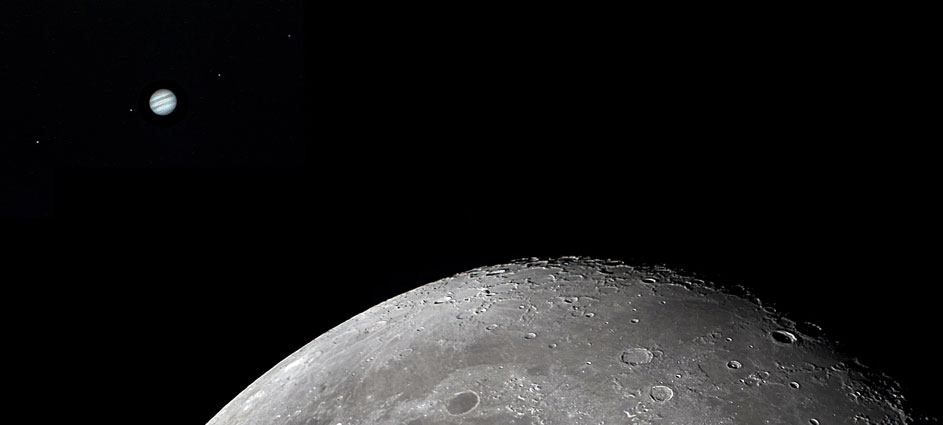March 1, 2005
A Close Approach
Image Credit: Dennis Simmons |
|
A Close Approach The fact that the Moon makes close approaches to the planets demonstrates one of the important regularities of our solar system. The planets orbit within a relatively flat ecliptic plane and the Moon, orbiting near the Earth’s equatorial plane, bobs around the ecliptic. We can’t easily imagine a solar system whose planets orbit at all angles to their sun’s equator because we believe that only planets in the same direction and nearly in the same plane can survive for billions of years without collisional destruction. And so because our solar system has this regularity we can enjoy the close approaches and eclipses of distant planets by our orbitally constrained Moon. As I have commented before, all planets, even giant Jupiter, are so visually small (at their biggest they are about the angular size of Plato) that it is a wonder anyone bothers to observe them! Technical Details: Related Links: Yesterday's LPOD: A Fractured Plateau Tomorrow's LPOD: LPOD Image of the Month: February, 2005 |
|
Author & Editor: |
COMMENTS?
Register, Log in, and join in the comments.




